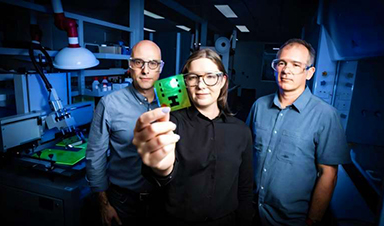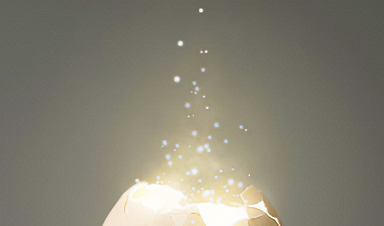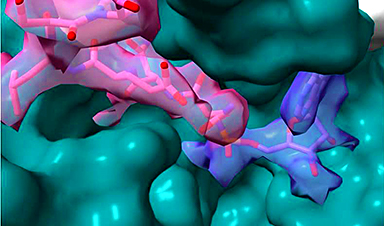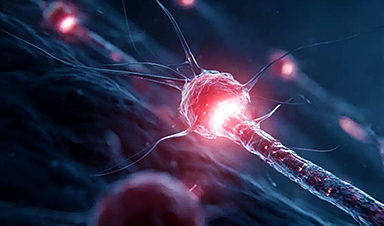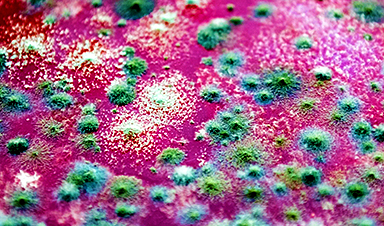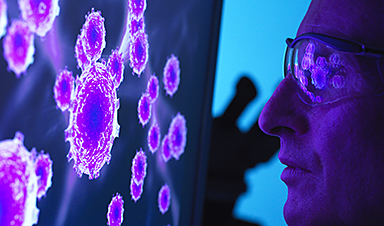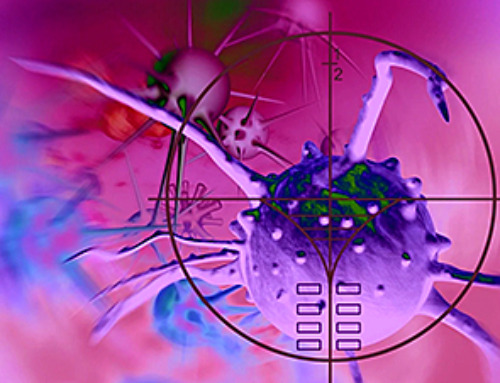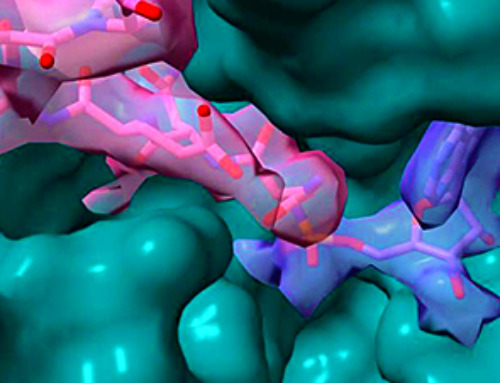An international research team, led by the University of Wollongong (UOW), has found wearable organic X-ray sensors could offer safer radiotherapy protocols for cancer patients.
More than 400 people are diagnosed with cancer every day in Australia and 50% of these people will go on to be treated with radiotherapy. The side-effects of cancer treatment, including radiation, can be debilitating.
Dr. Jessie Posar from UOW’s School of Physics is leading the research team exploring the behavior of organic X-ray sensors. Their paper “Flexible Organic X-Ray Sensors: Solving the Key Constraints of PET Substrates,” published today (November 22) in Advanced Functional Materials, shows promising results.
“Radiotherapy aims to use an external beam of ionizing radiation to kill or damage cancer cells without damaging surrounding healthy cells or organs. This requires precise delivery of the treatment protocols to optimize outcomes and minimize side effects,” Dr. Posar said.
“For example, acute skin toxicity is a common side effect and it’s experienced by 70% to 100% of patients with breast cancer. So, it’s clear that the safe use of radiation in medicine is paramount to better health outcomes for Australians.”
The researchers examined advancements in wearable organic X-ray sensors and found they could potentially transform future treatment options for cancer patients.
“Unlike traditional silicon-based detectors, organic semiconductors are inexpensive, lightweight, printable, stretchable and offer the first biocompatible response to ionizing radiation due to their carbon-based composition,” Dr. Posar said.
“These sensors can directly monitor radiation exposure of the body, allowing real-time adjustments during cancer treatments, minimizing damage to healthy tissues. However, the behavior of organic X-ray sensors is still unknown and that’s what our team wanted to explore.”
The researchers delved into the electronic performance and radiation stability of organic X-ray sensors under clinical radiation beams.
“Under conventional radiotherapy conditions we have demonstrated that organic sensors can detect incident X-rays with no dependence on the energy or dose-rate of the incoming beam, while transmitting 99.8% of the beam,” Dr. Posar said.
“This means it can be worn on a patient to monitor X-ray exposure without impacting treatment protocol to improve safety and clinical outcomes.”
The researchers worked with the Australia’s Nuclear Science and Technology Organization’s (ANSTO) Australian Synchrotron, one of only two places in the world developing a radiation therapy treatment modality. Termed Microbeam Radiation Therapy, the modality aims to treat otherwise untreatable tumors including brain cancer.
Dr. Posar said while it has shown promising treatment outcomes, there is no detector capable of providing quality assurance, limiting treatment efficacy and patient safety.
“Our study demonstrated that flexible organic sensors can detect microbeam X-rays with a precision of 2% and that they exhibit similar radiation tolerance to silicon-based detectors ensuring reliable and long-term use under these dangerous radiation fields,” Dr. Posar said.
“There is still a lot of unknown physics to explore. But our work shows that organic semiconductors exhibit the ideal properties for wearable and personalized X-ray sensing to improve the accuracy and safety in oncology towards tailored radiation delivery that maximizes therapeutic effectiveness and reduces harm to healthy tissues.
“This innovation could revolutionize personalized radiation therapy, offering a new level of safety and effectiveness in patient care.”
The next stage of research will involve data science approaches to accelerate the discovery and translation to real work applications.
Dr. Posar said continued international collaboration will be instrumental in current and future developments in this space. Her colleague and mentor, Professor Marco Petasecca from UOW’s School of Physics, reiterated the importance of collaboration.
“Our team has a long track record of collaboration, which reaches out nationally and internationally with the best groups in the world in the field of developing organic sensors,” Professor Petasecca said.
“We regularly collaborate with Professor Paul Sellin at the University of Surrey; Professor Beaturice Fraboni at the University of Bologna; Dr. Bronson Philippa at James Cook University; Associate Professor Matthew Griffith at the University of South Australia; the Center for Organic Electronics and the Australian National Fabrication Facility Hub at the University of Newcastle.”
Professor Attila Mozer from the Intelligent Polymer Research Institute at UOW said being involved in this research has been an un-learning journey to discover something new.
“The performance of organic diodes exposed to natural sunlight has increased by almost 600% over the last two decades, because of the work of tens of thousands of scientists and hundreds of millions of dollars in funding across the globe over that time,” Professor Mozer said.
“When we started using essentially the same materials for radiation detection, we needed to un-learn most of the well-established paradigms to make the progress we have presented today. It’s been a really fascinating aspect of this research.”
UOW Ph.D. student Aishah Bashiri, with the thesis topic on novel radiation detectors for dosimetry in advanced radiotherapy techniques, is supervised by Dr. Posar, Professor Petasecca and Professor Mozer. She is the paper’s first author.
More information: Aishah Bashiri et al, Flexible Organic X‐Ray Sensors: Solving the Key Constraints of PET Substrates, Advanced Functional Materials (2024). DOI: 10.1002/adfm.202415723
News
Nano-Enhanced Hydrogel Strategies for Cartilage Repair
A recent article in Engineering describes the development of a protein-based nanocomposite hydrogel designed to deliver two therapeutic agents—dexamethasone (Dex) and kartogenin (KGN)—to support cartilage repair. The hydrogel is engineered to modulate immune responses and promote [...]
New Cancer Drug Blocks Tumors Without Debilitating Side Effects
A new drug targets RAS-PI3Kα pathways without harmful side effects. It was developed using high-performance computing and AI. A new cancer drug candidate, developed through a collaboration between Lawrence Livermore National Laboratory (LLNL), BridgeBio Oncology [...]
Scientists Are Pretty Close to Replicating the First Thing That Ever Lived
For 400 million years, a leading hypothesis claims, Earth was an “RNA World,” meaning that life must’ve first replicated from RNA before the arrival of proteins and DNA. Unfortunately, scientists have failed to find [...]
Why ‘Peniaphobia’ Is Exploding Among Young People (And Why We Should Be Concerned)
An insidious illness is taking hold among a growing proportion of young people. Little known to the general public, peniaphobia—the fear of becoming poor—is gaining ground among teens and young adults. Discover the causes [...]
Team finds flawed data in recent study relevant to coronavirus antiviral development
The COVID pandemic illustrated how urgently we need antiviral medications capable of treating coronavirus infections. To aid this effort, researchers quickly homed in on part of SARS-CoV-2's molecular structure known as the NiRAN domain—an [...]
Drug-Coated Neural Implants Reduce Immune Rejection
Summary: A new study shows that coating neural prosthetic implants with the anti-inflammatory drug dexamethasone helps reduce the body’s immune response and scar tissue formation. This strategy enhances the long-term performance and stability of electrodes [...]
Scientists discover cancer-fighting bacteria that ‘soak up’ forever chemicals in the body
A family of healthy bacteria may help 'soak up' toxic forever chemicals in the body, warding off their cancerous effects. Forever chemicals, also known as PFAS (per- and polyfluoroalkyl substances), are toxic chemicals that [...]
Johns Hopkins Researchers Uncover a New Way To Kill Cancer Cells
A new study reveals that blocking ribosomal RNA production rewires cancer cell behavior and could help treat genetically unstable tumors. Researchers at the Johns Hopkins Kimmel Cancer Center and the Department of Radiation Oncology and Molecular [...]
AI matches doctors in mapping lung tumors for radiation therapy
In radiation therapy, precision can save lives. Oncologists must carefully map the size and location of a tumor before delivering high-dose radiation to destroy cancer cells while sparing healthy tissue. But this process, called [...]
Scientists Finally “See” Key Protein That Controls Inflammation
Researchers used advanced microscopy to uncover important protein structures. For the first time, two important protein structures in the human body are being visualized, thanks in part to cutting-edge technology at the University of [...]
AI tool detects 9 types of dementia from a single brain scan
Mayo Clinic researchers have developed a new artificial intelligence (AI) tool that helps clinicians identify brain activity patterns linked to nine types of dementia, including Alzheimer's disease, using a single, widely available scan—a transformative [...]
Is plastic packaging putting more than just food on your plate?
New research reveals that common food packaging and utensils can shed microscopic plastics into our food, prompting urgent calls for stricter testing and updated regulations to protect public health. Beyond microplastics: The analysis intentionally [...]
Aging Spreads Through the Bloodstream
Summary: New research reveals that aging isn’t just a local cellular process—it can spread throughout the body via the bloodstream. A redox-sensitive protein called ReHMGB1, secreted by senescent cells, was found to trigger aging features [...]
AI and nanomedicine find rare biomarkers for prostrate cancer and atherosclerosis
Imagine a stadium packed with 75,000 fans, all wearing green and white jerseys—except one person in a solid green shirt. Finding that person would be tough. That's how hard it is for scientists to [...]
Are Pesticides Breeding the Next Pandemic? Experts Warn of Fungal Superbugs
Fungicides used in agriculture have been linked to an increase in resistance to antifungal drugs in both humans and animals. Fungal infections are on the rise, and two UC Davis infectious disease experts, Dr. George Thompson [...]
Scientists Crack the 500-Million-Year-Old Code That Controls Your Immune System
A collaborative team from Penn Medicine and Penn Engineering has uncovered the mathematical principles behind a 500-million-year-old protein network that determines whether foreign materials are recognized as friend or foe. How does your body [...]
